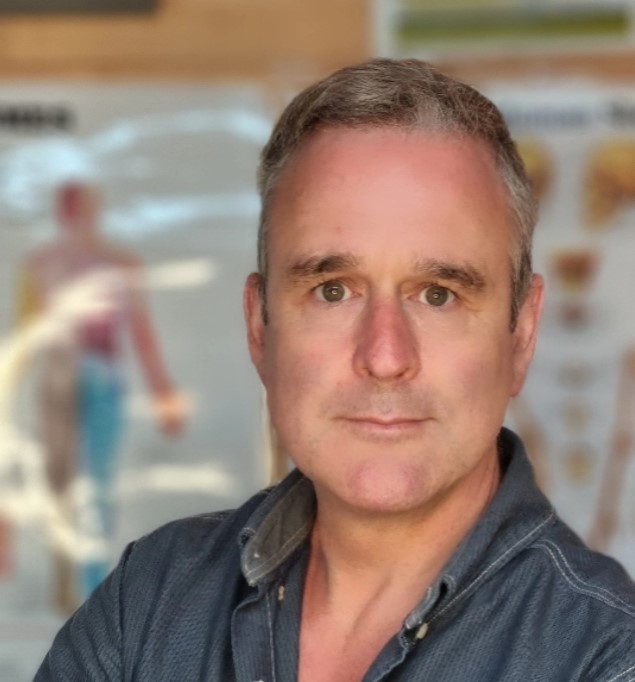
by Daren Knight
It was once maintained that emotions were purely mental expressions generated by the brain alone, and that the heart was purely a pump for moving oxygenated blood around the body. We now know that neither of these assumptions are true. The experience of an emotion results from the brain, heart and body acting together. We will first look at the various systems involved in manifesting and maintaining our emotional perceptions and responses.
Emotion activates the Autonomic Nervous System (ANS) and Hypothalamic-Pituitary Adrenal Axis (HPA Axis), which leads to a near-instantaneous cascade of changes in the activity and function of the body and its systems. Conversely, activation of the ANS and HPA Axis will also initiate responses in the emotion-processing centres of the brain.
The ANS is primarily made from the two branches – the Sympathetic Nervous System (SNS) (the ‘Fight & Flight’ system), and the Parasympathetic Nervous System (PSNS) (the ‘Rest & Digest’ system).
On activation of a stress response the SNS releases the neurotransmitters of norepinephrine and neuropeptide Y (NPY) from nerve terminals, while the adrenal medulla releases epinephrine (adrenaline) into the bloodstream. Alongside this reaction, the HPA Axis will release the stress hormone cortisol into the bloodstream. Release of these chemicals into our systems produces a variety of increased cardiovascular workload effects. The PSNS is the brake to this activation. The major neural pathway of the parasympathetic system is the vagus nerve, whose main neurotransmitter is acetylcholine (ACh), sending messages to and from the Central Nervous System (CNS) to innervate various body organs, slowing the heart and reducing blood pressure. It is this calming side of the nervous system that is also involved in releasing the ‘happy hormones’, such as serotonin and oxytocin, into our body.
In a healthy person, stress activation should be in as short a time frame as possible, and not sustained, as chronically high levels of stress hormones are associated with depression, poor appetite, insomnia, and various cardiovascular conditions.
We can imagine the human brain as an upside triangle separated into three levels, from bottom to top: the brain stem – the subconscious operating system of our body; the limbic system – the subconscious operations of our behavioural and emotional responses; and the higher cortex – the consciously aware ‘thinking’ region of the brain with our thoughts, words, perceptions, and voluntary actions. All of our sensory input of the body’s hormonal and neural data comes from a ‘bottom-up’ direction, via the brain stem, then on to the limbic system, and finally to our awareness in the higher cortex. With our higher cortex only having limited access to the lower levels, the emotional regions of the brain analyse and process information sent from the body, hormones and nervous system, translating them as an emotional feeling, before we’re even consciously aware of it. In a stress response situation, cognitive regions of the higher cortex immediately begin to shut down, denying us access to rationalisation. In this state, we behaviourally react instantly and instinctively with little rational thought.
As well as being a mechanistic pump of blood flow, the heart is also an endocrine organ, producing A and B type natriuretic peptides (ANP and BNP). These peptides are used in response to the workload of the heart to alleviate cardiac load by decreasing the amount of extracellular fluid and lowering blood pressure. As an endocrine organ, the heart becomes a semi-autonomous self-regulating mechanism that works to the benefit of itself and other associated organs and systems. As part of this interconnected system, the heart has more afferent neural pathways to the brain and other systems than it does efferent neural pathways from them to it. With each beat, the heart not only acts as a pump, but also transmits dynamic patterns of neurological, hormonal, pressure and electromagnetic information to the brain and throughout the body. Cardiac ascending input influences the activity and function of higher brain centres that are involved in perceptual, cognitive and emotional processing, and can either inhibit or facilitate cortical functions.
The timing between each heartbeat is called Heart Rate Variability (HRV). Although when listening to a heartbeat it sounds very regular, the timing between each and every heartbeat is actually irregular. What drives this difference is our nervous system. The SNS is constantly trying to speed up our heart beat, while the PSNS is constantly trying to put the brakes on and slow it down. This ever-changing balancing act between the two branches of the nervous system make the HRV of each heartbeat randomly different.
We can now see how each system that we’ve discussed – the HPA Axis, the ANS, the brain, and the heart – all work individually to respond to our thoughts or the world around us, and also to some extent work with each other for the same purpose. The result is that dependent on our environment, we swing between differing physical and mental states of being. However, our systems like normality, they like balance, and they like to return to a state of equilibrium. We call this state of equilibrium our Baseline. The problem is that if we regularly and consistently spike our arousal, through extreme mental or environmental changes, as we see in states such as fear, stress, or anxiety, then hormonal responses ensure that our systems become overly-sensitised, and therefore react even quicker to stimuli. This will close down rational cognitive functions of the higher cortex, making thoughts of how to reduce stress or anxiety more difficult, leaving us open to more stress or anxiety inducing stimuli, and so the vicious circle continues. Over time, this negative response and behaviour becomes normalised by our brain and systems, raising our baseline balance-point, which in turn increases our state of arousal, speeding up the vicious circle.
Because our ‘thinking’ higher cortex has limited access to the emotion-processing centres of the limbic brain, it is difficult to counter a stress-response with thoughts alone. To do this effectively and quickly, we need the heart, because it is uniquely positioned as a powerful entry point into the communication network that connects the body, mind, and emotions. If you will, imagine our physiological systems as musicians of an orchestra, and our heart as the conductor. As the conductor of the orchestra, the heart can display a rhythm that will be messaged to all other systems, bringing them into the same rhythm with it. Instead of each musician playing random notes, all are brought together, under the influence of the heart, in harmony.
To initiate this body-wide harmony, we first need to use our cardiovascular system to regulate our heartbeat to the point where the PSNS is engaged. By breathing in a deep and relaxed manner (optimally at a rate of 5-second inhalations/exhalations) the neural and hormonal transmissions of the heart begin to engage the ANS in a manner that balances the two branches of our nervous system, in turn reducing the HRV variability between each heartbeat. Once HRV has balanced into a harmonious rhythm, we call this Heart Coherence, and it can happen in as little time as one minute. Heart coherence initiates afferent messaging to the brain, alongside related feedback from the ANS. The brain recognises this positive pattern, and works to lower the baseline of arousal. By now, our body and mind has been calmed. At this stage, by adding the feeling of loving thoughts, or thoughts of gratitude, we can complete the hormonal and neural loop between our limbic brain, ANS, and heart, and drive the heart into even deeper coherence, creating an even stronger positive pattern.
This exercise, driven by heart coherence, allows the emotional centres of the brain to shift from negative to positive emotions, reinforcing the positive hormonal feedback from the HPA Axis, the ANS, and the heart. Regular practice of a heart coherence technique reinforces the coupling between positive psychophysiological responses and positive emotions, which in turn strengthens our ability to use physiological coherence to shift us into a positive emotional state, or use a positive emotional state to shift us into physiological coherence. By intentionally making these internal adjustments, we are capable of self-managing and self-regulating our feelings to inhibit unhealthy behavioural responses, reduce physical and mental stress, and form emotional baselines that are stable, familiar and healthy – positive psychophysiological coherence.
I end this article with a quote from author Milan Kundera, as I feel it summarises heart coherence beautifully…
“When the heart speaks, the mind finds it indecent to object.”
Daren Knight
Amatsu therapist, HeartMath certified practitioner, Sharon Wheeler ScarWork therapist
An addendum to this article and links to relevant content appears in the Members’ Area. To find out about membership and the benefits please click here.
Joining The Hub
There are many benefits to joining The Fascia Hub community. We will be continually revising and updating how we can better support our members. Of course, if you have any ideas or thoughts as to what you would like to see, then we would love to hear from you. Our membership proposition is continually evolving and changing to ensure that we bring you the best from the world of fascia. If there is something you would like to learn more about, please do drop us a line and let us know.

